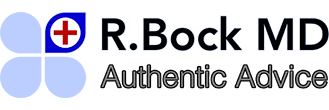The COVID-19 pandemic not only brought unprecedented challenges but also exposed how deeply intertwined media, government, and pharmaceutical interests can manipulate public narratives. John Davidson’s documentary, Epidemic of Fraud, dives into this troubling phenomenon, revealing how early treatments like hydroxychloroquine and ivermectin were suppressed, not for scientific reasons, but for political and financial gain.
Table of contents
- Media Manipulation During COVID-19
- Government and Pharmaceutical Influence
- The Role of Donald Trump in COVID-19 Treatment Controversies
- Davidson’s Personal Journey in Uncovering the Fraud
- Big Pharma’s Role in Misinformation
- Regulatory Capture in the Pandemic
- The Politicization of Medicine
- Hydroxychloroquine and Ivermectin: Safe, Yet Suppressed
- The Call for Transparency in Medicine
- Conclusion
- FAQs
- Related Articles
Media Manipulation During COVID-19
The Role of Media in Shaping the Pandemic Narrative
The media, throughout the COVID-19 pandemic, played a crucial role in shaping public perception. Daily broadcasts bombarded audiences with fear-driven messages, reinforcing the idea that only vaccines could save us. Davidson’s documentary highlights how this one-sided narrative left little room for alternative perspectives or treatments. The result? A public increasingly divided and confused about what to believe.
Suppression of Early Treatments: Hydroxychloroquine and Ivermectin
Hydroxychloroquine and ivermectin, once hailed as potential game-changers, were quickly dismissed by the media. Why? Davidson reveals that this dismissal wasn’t backed by strong scientific evidence but was instead driven by political motivations.
Dismissal of These Treatments Without Scientific Backing
Despite both drugs being FDA-approved and widely used for decades, they were labeled as dangerous during the pandemic. Davidson’s documentary asks the difficult questions: Why was something safe for decades suddenly demonized? The answer lies in the intersection of politics and media influence.
The Political Motivations Behind Discrediting Certain Treatments
Davidson argues that Donald Trump’s endorsement of hydroxychloroquine played a significant role in its downfall. The media’s anti-Trump bias extended to anything he supported, including this treatment, transforming it from a potential remedy into a politically toxic issue. This was a classic case of politics overshadowing science.
Government and Pharmaceutical Influence
Regulatory Capture: A Dangerous Alliance
One of the most alarming revelations in Davidson’s film is the concept of regulatory capture. This occurs when regulatory agencies, like the FDA and CDC, become so enmeshed with the industries they’re supposed to regulate that their judgments are no longer impartial.
The Intertwining of Public Health Agencies and the Pharmaceutical Industry
Davidson presents a compelling case that these agencies, particularly during the pandemic, were more concerned with serving Big Pharma’s interests than protecting public health. This cozy relationship led to policies that often favored pharmaceutical profits over patient safety.
How This Connection Eroded Public Trust
As Davidson points out, the erosion of public trust was inevitable. When the agencies tasked with keeping us safe appear to be more invested in corporate profits, people naturally begin to question the integrity of their recommendations.
The Role of Donald Trump in COVID-19 Treatment Controversies
Trump’s Endorsement of Hydroxychloroquine
Donald Trump’s endorsement of hydroxychloroquine may have been well-intentioned, but it had disastrous consequences for the drug’s credibility.
How the Endorsement Became Politically Charged
Davidson humorously notes that “Donald Trump and hydroxychloroquine had an affair, and that was their baby.” This politically charged environment led to the treatment being judged not on its merits, but on who endorsed it.
Impact on the Credibility of the Treatment
Had Trump never mentioned the drug, hydroxychloroquine might have received a fairer scientific evaluation. Instead, it became a symbol of partisan warfare, with facts taking a backseat to political allegiances.
Davidson’s Personal Journey in Uncovering the Fraud
From Marketing in Hollywood to Exposing the Pandemic’s Misinformation
John Davidson wasn’t always a documentary filmmaker. His background in Hollywood marketing gave him a unique lens through which to view the pandemic. He knew firsthand how narratives are shaped and how manipulation works in media. The sudden censorship and media manipulation during the pandemic sparked his curiosity.
What Inspired Davidson to Create Epidemic of Fraud
Watching media outlets deliberately suppress information about early treatments, Davidson knew he couldn’t remain silent. His journey into the “epidemic of fraud” began, driven by a sense of urgency to expose the truth.
Big Pharma’s Role in Misinformation
Pharmaceutical Advertising’s Influence on Broadcast Media
One of Davidson’s boldest claims is that pharmaceutical advertising needs to be banned from broadcast media. He argues that these advertisements, which flood the airwaves, have skewed the media’s priorities and clouded objective reporting.
Financial Motives Behind the Vaccine Narrative
Davidson points to the financial incentives that led to the aggressive promotion of vaccines while dismissing alternative treatments.
Vaccines as a “Ponzi Scheme”
Davidson compares the vaccine push to a Ponzi scheme, where the goal is to keep the money flowing, regardless of the consequences. This assertion may seem extreme, but he backs it with compelling evidence that challenges the motivations behind the widespread vaccine campaign.
Media’s Role in Promoting Vaccines and Suppressing Alternative Treatments
The media’s cozy relationship with Big Pharma ensured that vaccines were treated as the only viable solution, with alternative treatments relegated to conspiracy theory status.
Regulatory Capture in the Pandemic
What is Regulatory Capture?
Regulatory capture is when agencies tasked with regulating industries become subservient to the very businesses they’re supposed to oversee.
How the FDA and CDC Serve the Interests of Big Pharma
During the pandemic, Davidson argues that regulatory capture was on full display. The FDA and CDC seemed more concerned with protecting pharmaceutical interests than public health.
Examples of Regulatory Failure During the Pandemic
From fast-tracking vaccines to dismissing early treatments, Davidson provides a thorough examination of how regulatory agencies failed the public during the pandemic.
The Politicization of Medicine
The Damage Done by Politicizing Health Decisions
By turning health issues into political battlegrounds, the media and government have made it harder for people to trust legitimate medical advice.
The Public’s Growing Distrust in Medical Institutions
This distrust has far-reaching consequences, as people now question even routine medical recommendations.
How Media Narratives Influenced Medical Policies
The media’s selective coverage and bias influenced medical policy decisions, pushing treatments like hydroxychloroquine and ivermectin to the sidelines.
Hydroxychloroquine and Ivermectin: Safe, Yet Suppressed
The History of These FDA-Approved Drugs
Hydroxychloroquine and ivermectin were both FDA-approved long before COVID-19 and have proven safety records.
Why Were These Treatments Suddenly Deemed Dangerous?
Davidson’s documentary raises the question: why were these drugs, which had been safely used for decades, suddenly labeled as dangerous?
The Conflict Between Right to Try Legislation and Pandemic Restrictions
The irony is that while the Right to Try law allows terminally ill patients access to experimental treatments, COVID-19 patients were denied that same right for these FDA-approved drugs.
The Call for Transparency in Medicine
Davidson’s Appeal for Honesty in the Medical Field
Davidson’s film is a call to action for more transparency and honesty in medicine. He believes the pandemic has shown just how compromised the system has become.
The Need to Restore Public Trust
Rebuilding public trust will require a complete overhaul of how medical information is communicated and regulated.
How to Fight Back Against Misinformation
Davidson urges the public to remain vigilant and question the narratives being presented. By demanding transparency, we can prevent future “epidemics of fraud.”
Conclusion
John Davidson’s Epidemic of Fraud is a wake-up call to anyone who values truth and transparency. His documentary sheds light on the murky world of media manipulation, government overreach, and pharmaceutical influence during the COVID-19 pandemic. By exposing the suppression of early treatments and the politicization of health decisions, Davidson highlights the need for a major shift in how we approach medicine and public health.
FAQs
John Davidson was inspired to create the documentary after witnessing media manipulation and censorship of alternative COVID-19 treatments, leading him to investigate further.
Hydroxychloroquine and ivermectin are FDA-approved medications that were considered potential treatments for COVID-19 but were heavily suppressed during the pandemic.
Regulatory capture occurs when regulatory agencies become too closely tied to the industries they regulate. During COVID-19, Davidson argues that agencies like the FDA and CDC served pharmaceutical interests rather than the public.
Trump’s endorsement of hydroxychloroquine politicized the drug, causing it to be discredited by the media and public health agencies, regardless of its potential benefits.
While these treatments are still being studied, their use during the pandemic was largely suppressed, and they remain controversial despite ongoing research.
Related Articles
Discover more from Randy Bock MD PC
Subscribe to get the latest posts sent to your email.

























